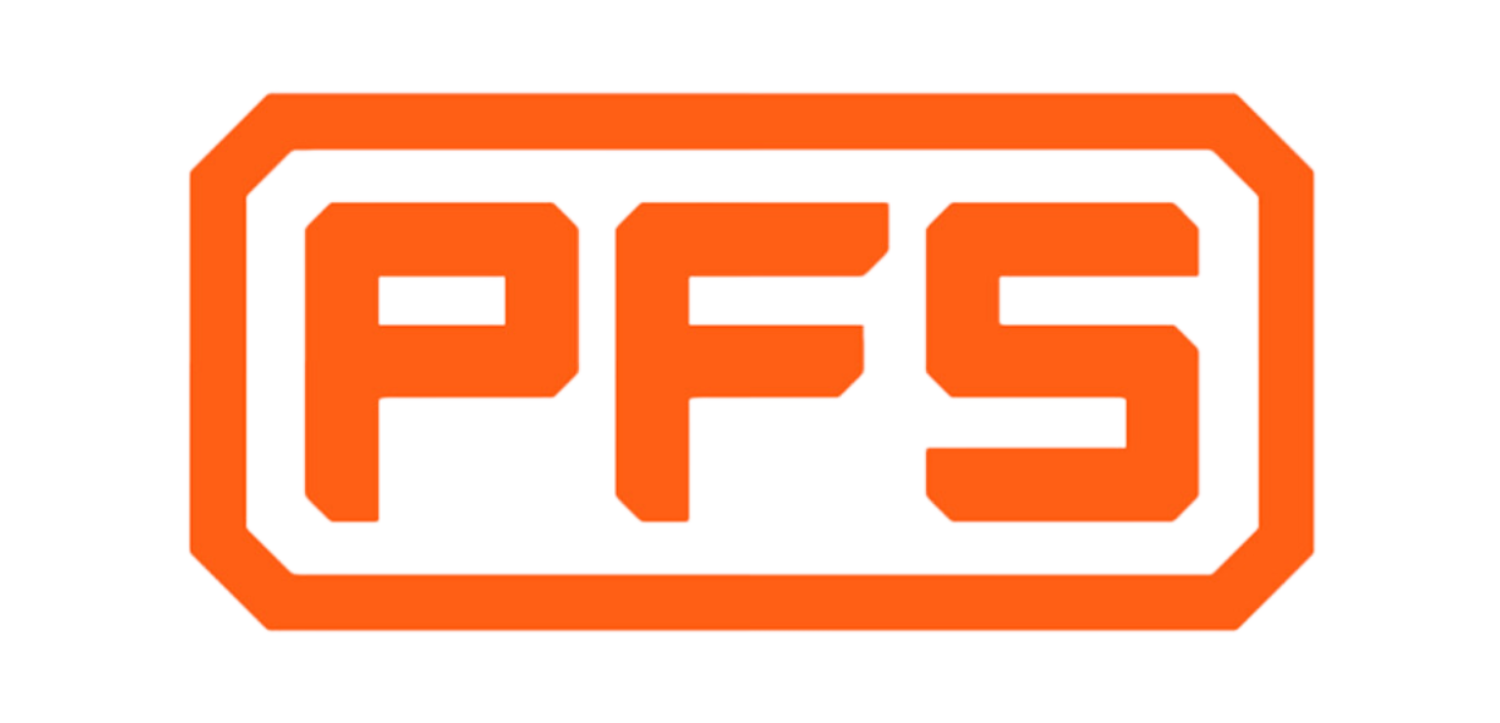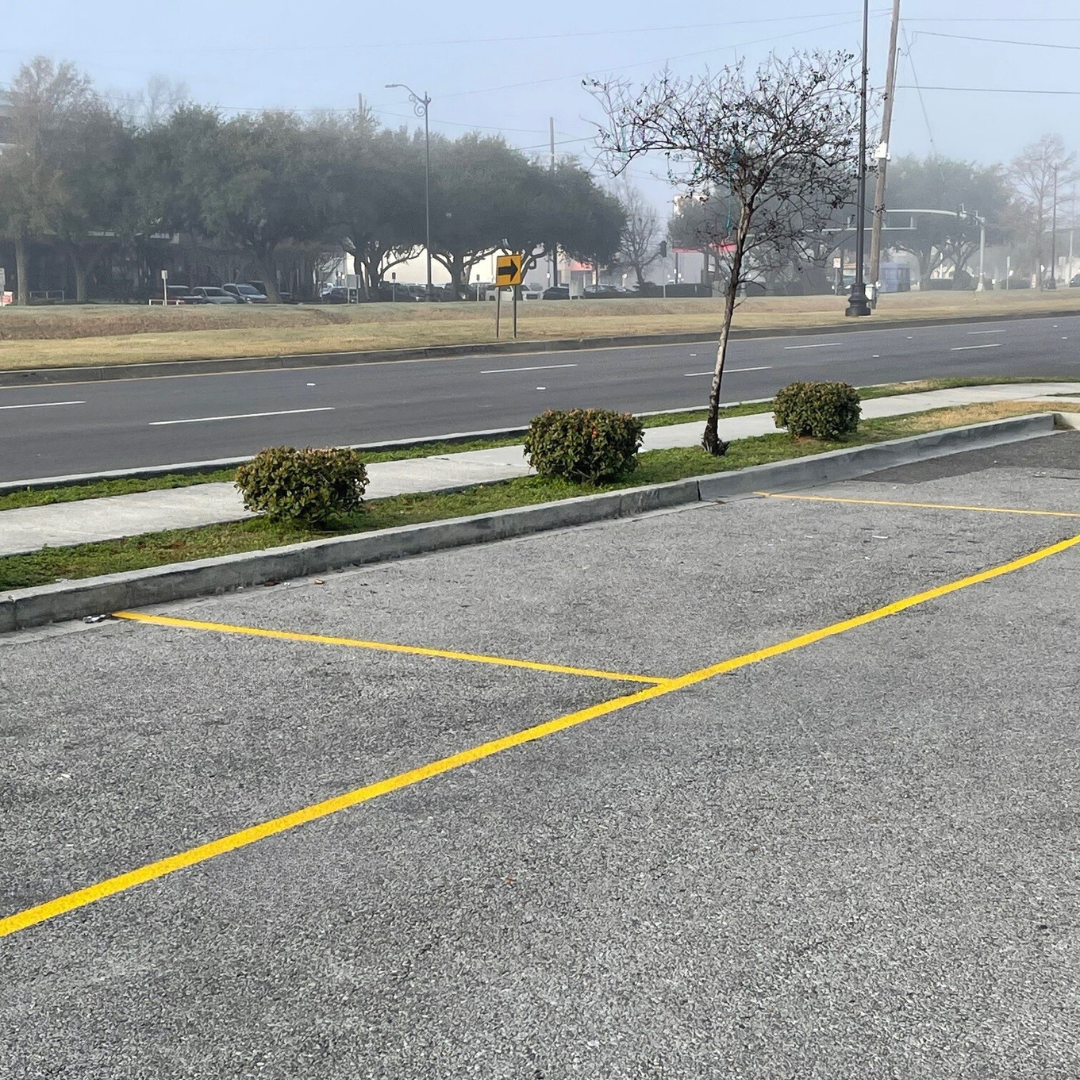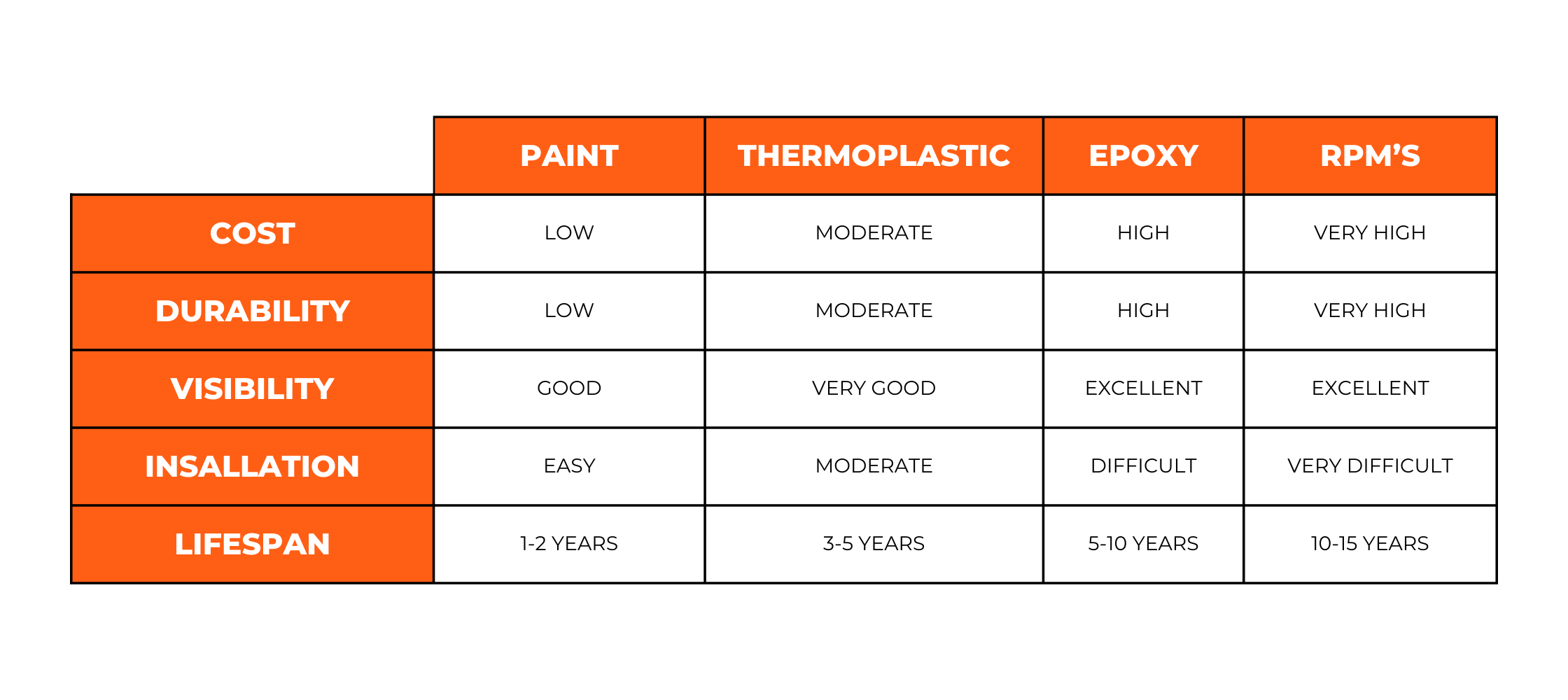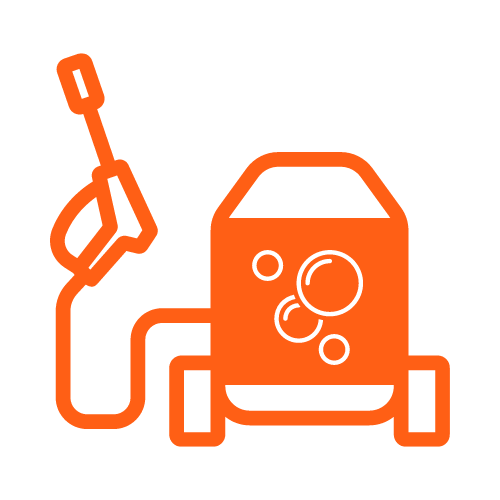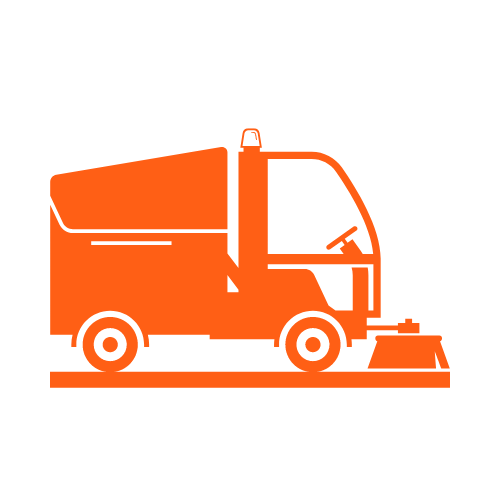Methods of Pavement Marking: A Comparison.
4/1/2024. Written By Joshua D. Bennett.
Pavement marking plays a vital role in enhancing safety, efficiency, and organization within parking lots and garages. These markings serve as visual cues that guide drivers and pedestrians, ensuring smooth traffic flow and minimizing the risk of accidents. Clearly marked parking spaces, directional arrows, crosswalks, and stop lines help drivers navigate the parking facility in an orderly manner. Additionally, pavement markings designate areas for specific purposes, such as accessible parking, loading zones, and fire lanes, facilitating appropriate use of the space and ensuring compliance with regulations. Overall, pavement markings are essential elements of parking lot and garage design, contributing to a safe, efficient, and well-managed parking environment. Let’s take a deeper look.
Pavement Markings Include: Parking Stall Striping, Stop Lines, Speedbumps, Pedestrian Walkways, Fire Lanes, ADA Parking, EV Parking, No Parking, Fire Lanes, Directional Arrows, Speed Limit Signs, Curb Marking and more.
There are a variety of methods available for applying pavement markings, each with its own advantages and disadvantages.
Paint: Paint is the most traditional method of pavement marking. It is relatively inexpensive and easy to apply, making it a popular choice for low-traffic roads and parking lots. However, paint is not very durable and can fade or wear off quickly, especially in areas with heavy traffic or extreme weather conditions.
Thermoplastic: Thermoplastic is a type of hot-applied pavement marking material. It is more durable than paint and lasts significantly longer, making it a good choice for high-traffic roads and highways. However, thermoplastic is also more expensive than paint and requires specialized equipment to apply.
Epoxy: Epoxy is another type of hot-applied pavement marking material. It is even more durable than thermoplastic and has excellent adhesion to the pavement. Epoxy is often used for applications where high visibility is required, such as crosswalks and stop lines. However, epoxy is also the most expensive pavement marking material and requires specialized equipment to apply.
Raised pavement markers (RPMs): RPMs are small, reflective markers that are embedded in the pavement. They provide excellent visibility at night and in inclement weather conditions. However, RPMs are also the most expensive pavement marking option and require specialized equipment to install.
This table compares the key characteristics of the four pavement marking methods discussed in this blog post.
The best pavement marking method for a particular application will depend on a number of factors, including the traffic volume, the weather conditions, and the budget. For low-traffic roads and parking lots, paint may be a good option. For high-traffic roads and highways, thermoplastic or epoxy may be a better choice. And for applications where high visibility is required, RPMs may be the best option.
No matter which pavement marking method you choose, it is important to have it applied by a qualified professional. This will ensure that the markings are applied correctly and that they will last for as long as possible. Learn more about our Pavement Marking Services or contact us below to discuss your project and get an obligation free quote.
